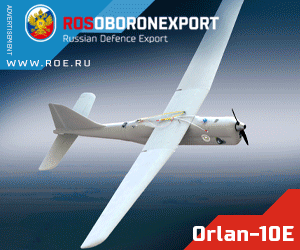By Group Captain Anupam Banerjee (r)

In today’s world, excellence in the domain of geo-technology is likely to give any nation a definitive edge in geo-strategy, geo-politics, and geo-economics. Keeping abreast with the latest in this domain is undoubtedly a prerequisite to maintaining a global power status. India, which aspires to become a global power in future hence needs to harness the latest technologies like 5G and Internet of Things (IoT), Artificial Intelligence (AI), Machine Learning (ML), Quantum Computing etc., to reach its goal. The path leading to that is full of challenges, and solutions for the same must be created by adopting indigenous technology, innovation and research.
Twenty-first-century warfare is mostly about evolved situational awareness, disposition, contextual knowledge, and synergised action. Technological breakthroughs have reshaped the doctrinal, organisational, and strategic contours of warfare.
In the neighbourhood, China is heavily investing in AI and quantum computing. Like Israel, China also has plans to deploy the ‘Iron Dome’ technology. The United States of America (USA), Israel, and a few European countries have already invested heavily in R&D and 5G. In fact, the global 5G in defence market size is projected to grow from USD 64 million in 2020 to USD 1,318 million by 2025, at a CAGR of 57.9% from 2021 to 2025. Factors such as the Higher network speed and lower latency in 5G and growing adoption of autonomous and connected devices are driving factors assisting the growth of the 5G in the defence market.
Winability of war requires real-time information about the adversary, technologies such as AI, IoMT etc., that can enhance the capabilities of surveillance systems, communications equipment, lightweight weapons, survival gear, and precision munitions.
On analysis of the Information and Communications Technology (ICT) development roadmaps undertaken by Australia, Israel, the United Kingdom (UK) and the USA, it can be inferred that all these countries have deployed robust ICT Defence infrastructure. Some of the lessons that can be factored into the Indian context are as follows:
● Investment in network infrastructure requires a horizon of 15-20 years and needs to be made in phases lasting five-six years each.
● Obsolescence management of existing infrastructure and timely upgrade to new technologies is key to maintaining the effectiveness of the network.
● Joint doctrine for interoperability of the network infrastructure is critical.
● Need for a single agency to manage defence ICT infrastructure.
● The design of open architectures that enable multiple vendors to supply systems and components is likely to result in cost-effectiveness while ensuring continued network enhancement.
● Sharing of infrastructure between military, para-military and civil authorities can assist in bringing down the cost of acquisition and maintenance.
Globally, countries such as the USA, Israel, UK, Australia, and China have invested enormous amounts for upgrading/developing their ICT Infrastructure to support their Defence Forces. However, in the case of India, the budgetary allocations as a percentage of GDP have been declining for the past several decades, resulting in a huge backlog of modernisation, including that of ICT infrastructure.
The armed forces are increasingly focusing on jointness, and that can be best achieved when certain identified gaps are addressed in a time-bound manner: In operations, non-interoperability of the ICT networks, lack of multi-layer, integrated ICT system for the Tactical Battle Area and absence of synergy between the Electronic Warfare (EW) and Signal Intelligence resources of the three services are significant concerns.
Another concern is the absence of a unified cyber-security management and emergency response system for offensive and defensive operations. The existing Anti-Infiltration-Obstacle-System (AIOS) is vintage and does not have all-weather Smart Border Management capabilities like the Iron Dome of Israel. The existing Mobile Cellular Communication System (MCCS) is vintage and does not support agile-scalable mobile connectivity with rich and Soldier friendly applications.
Lack of a centralised tri-services ICT organisation for planning-Execution-Monitoring-Budgeting and laying standards for ICT infrastructure in the Armed forces is another challenge that, coupled with budgetary constraints, makes the current scenario grim.
There is an urgent need for early adoption of new technologies like 5G, AI, AR, VR, IoT, Quantum Computing etc., and should include technologies and connectivity solutions based on Satellite/Space Technologies.
Over the past decade, static/strategic backbone networks like the NFS, ASCON, AFNET, NCS, DCN have been deployed; however, the connectivity to the forward troops, interoperability etc., remains a challenge. Adopting the concepts of ‘soldier first’ and ‘net centricity’ to achieve seamless integration would make our combat forces lethal, leaner, and technologically advanced. The following ICT based solutions can be adapted for our armed forces to achieve this:
● Lightweight unified communication handset with multiple overlays (Satellite, HF, VHF), data connectivity and automatic frequency changeover etc., to do away with the legacy bulky radios operating in the HF VHF and UHF bands. The intended handsets should be interoperable across the forces.
● 4G Pvt LTE based solutions for the CI/CT grid that can be deployed in the Northern and Eastern sectors.
● Unmanned ground-based, AI-enabled mobile platforms for surveillance and combat while operating in CI/CT grid to reduce human casualties.
● Artificial Intelligence-based ground surveillance system comprises long-duration unattended sensors, foliage penetration surveillance systems, hostile fire-detection and positioning capabilities that can be used in Jungle/mountainous/high altitude.
● Advance AI and sensor-based friend/foe platform detection and identification system for air force/navy and army.
● Multi-layer, sensor-based smart perimeter protection systems with QRTs that can be deployed for static establishments like formation headquarters, hospitals, cantonments, air force and naval bases/technical areas. This would help reduce the manpower deployed for the protection of these installations.
● In-built IoT based chipsets for artillery guns, AD guns, radars, military transport, tanks etc., that can monitor the health of the platforms and equipment; this would result in lower downtime and lower revenue expenditure on repairs and maintenance.
● Data networks for ships and submarines to convert them into smart platforms.
● Secure-interoperable tri-services tactical battle communication system with indigenous security overlay.
● Blockchain technology solutions for human resource management, inventory management, logistic management for tri-services.
● AI, AR and VR based training simulators for field formations/units.
Thus an urgent need exists for creating the ICT Infrastructure for our defence forces, and the following are recommended.
● Creation of smart digital frontiers (Physical/Virtual) along our borders.
● Policy on the creation of telecom ducts along the border roads.
● 4G Pvt LTE/ 5G Networks for Eastern, Northern and Western Commands.
● Allocation of at least 3% of the defence budget for ICT modernisation.
● Constitution of a dedicated department for development and management of ICT Infrastructure for the defence forces.
● Creating a task force with representatives from the Ministry of Defence (MoD), Service HQs, industry, think tanks and academic institutions to develop a roadmap for the modernisation of ICT infrastructure and capabilities of our armed forces.
ICT is a catalyst that would help provide seamless integration to our Defence forces. There is an urgent and inescapable need to revisit and assess our capabilities based on the gap analysis, threat perceptions and the global best practices. Budgetary allocations, time-bound implementation, and monitoring and accountability framework would go a long way in creating the right ICT capabilities that our forces would require to address future challenges.


